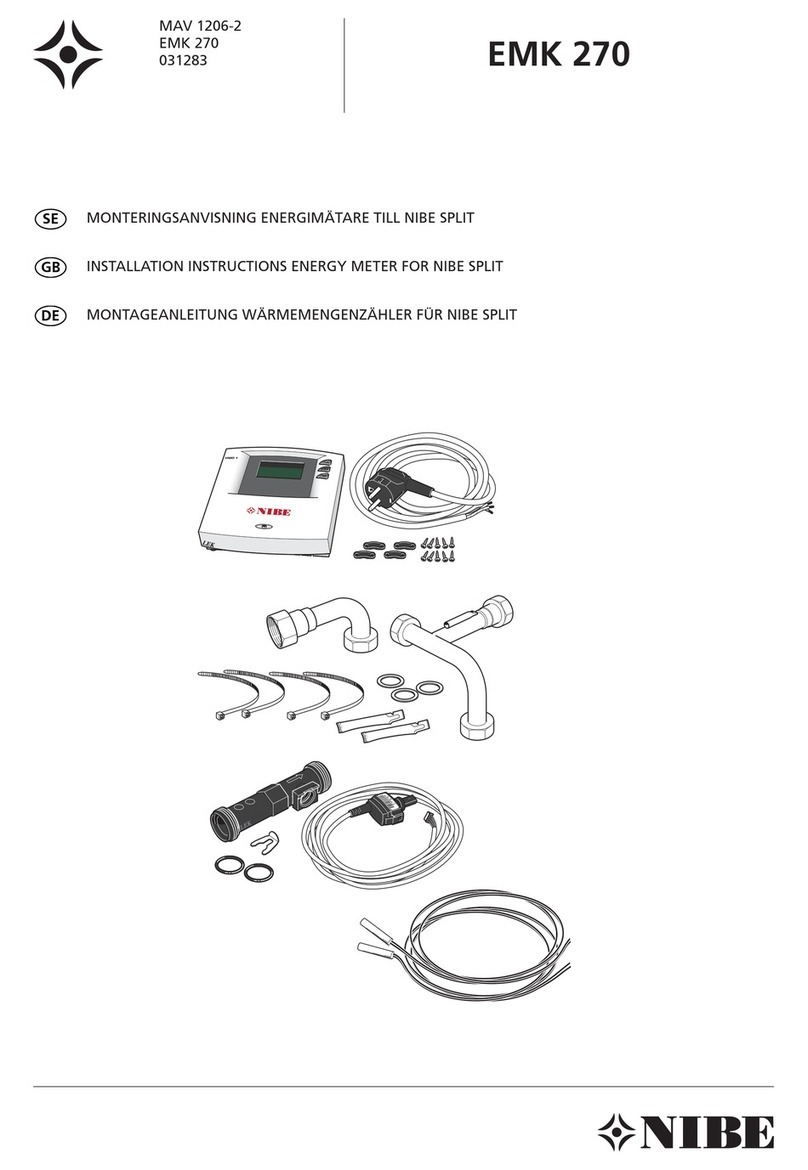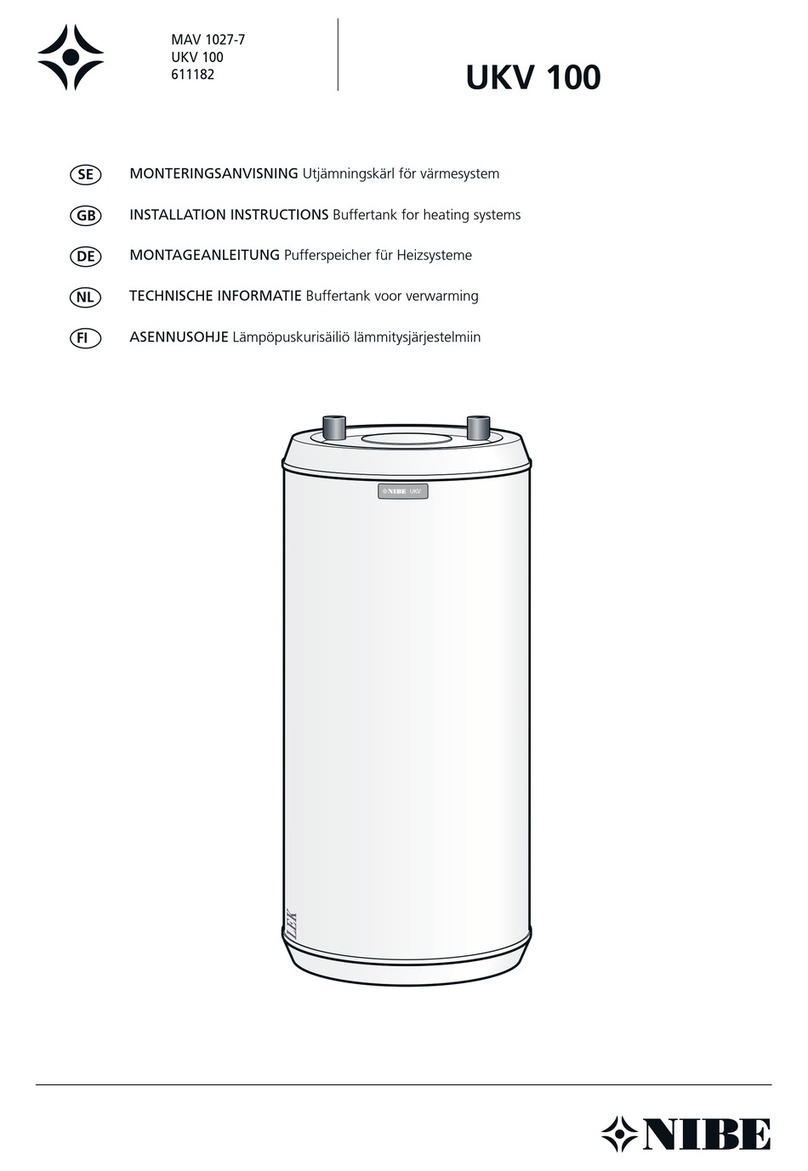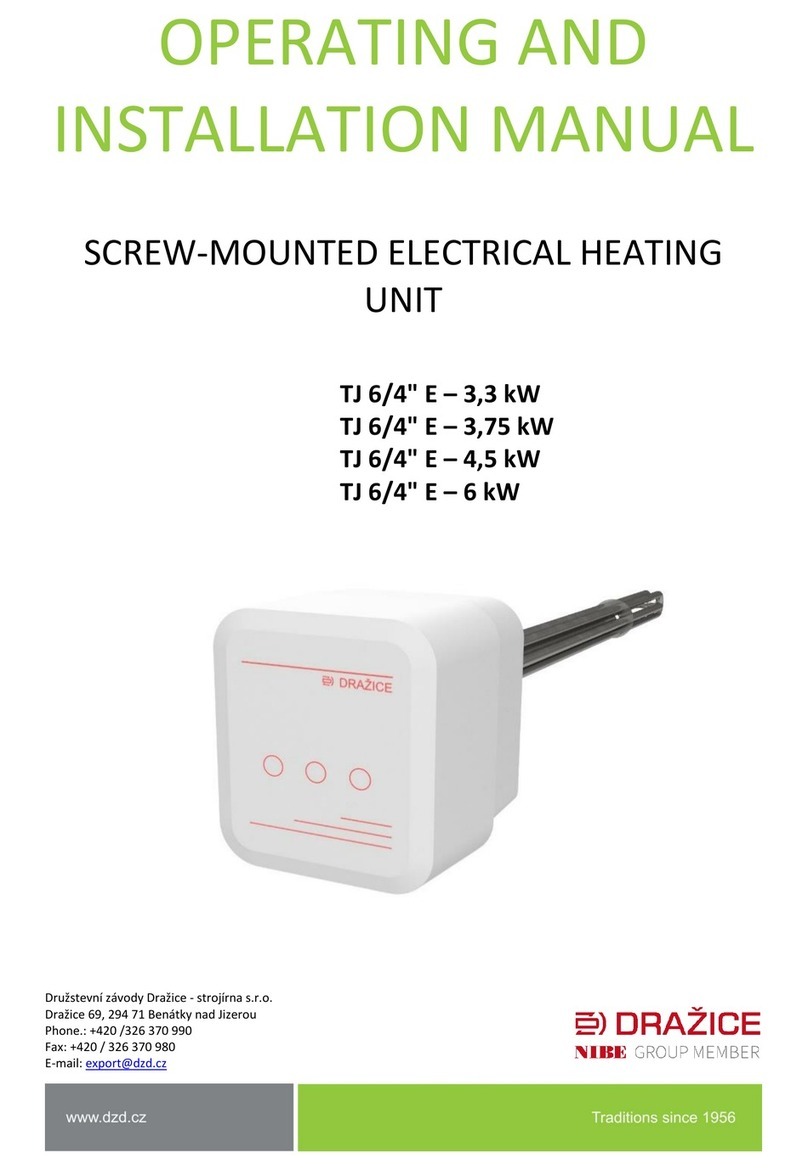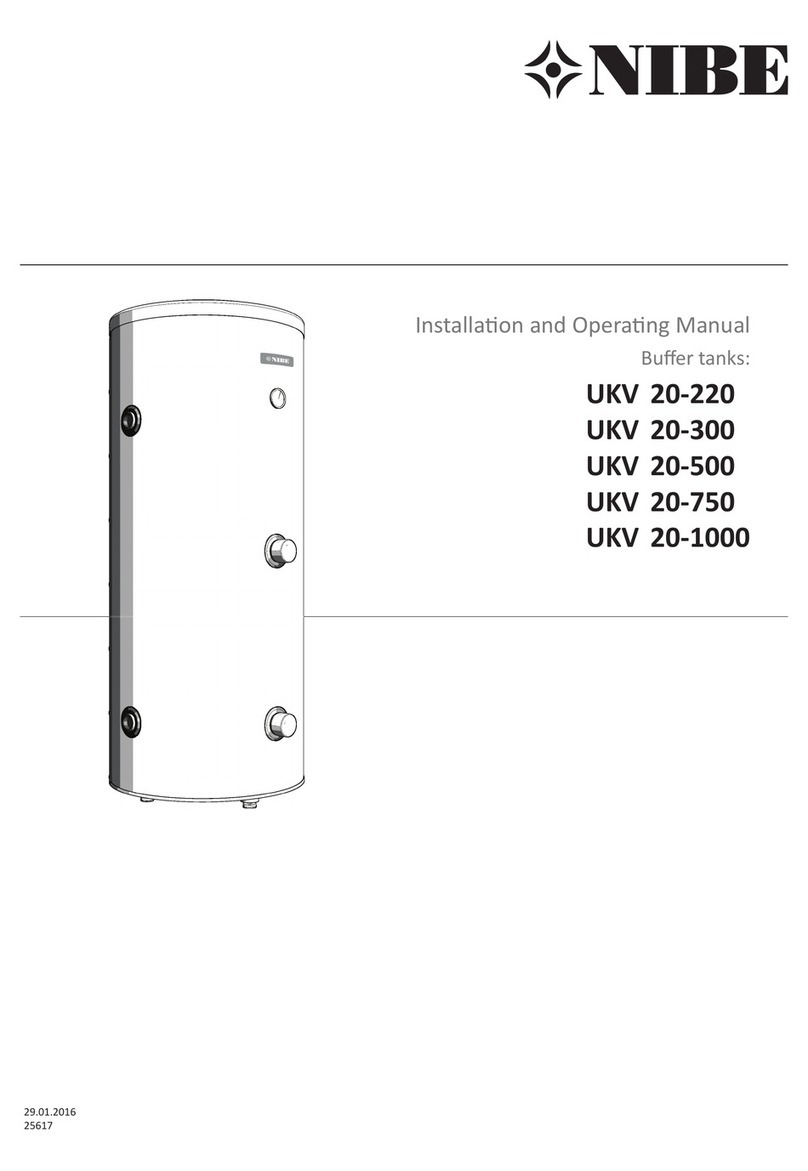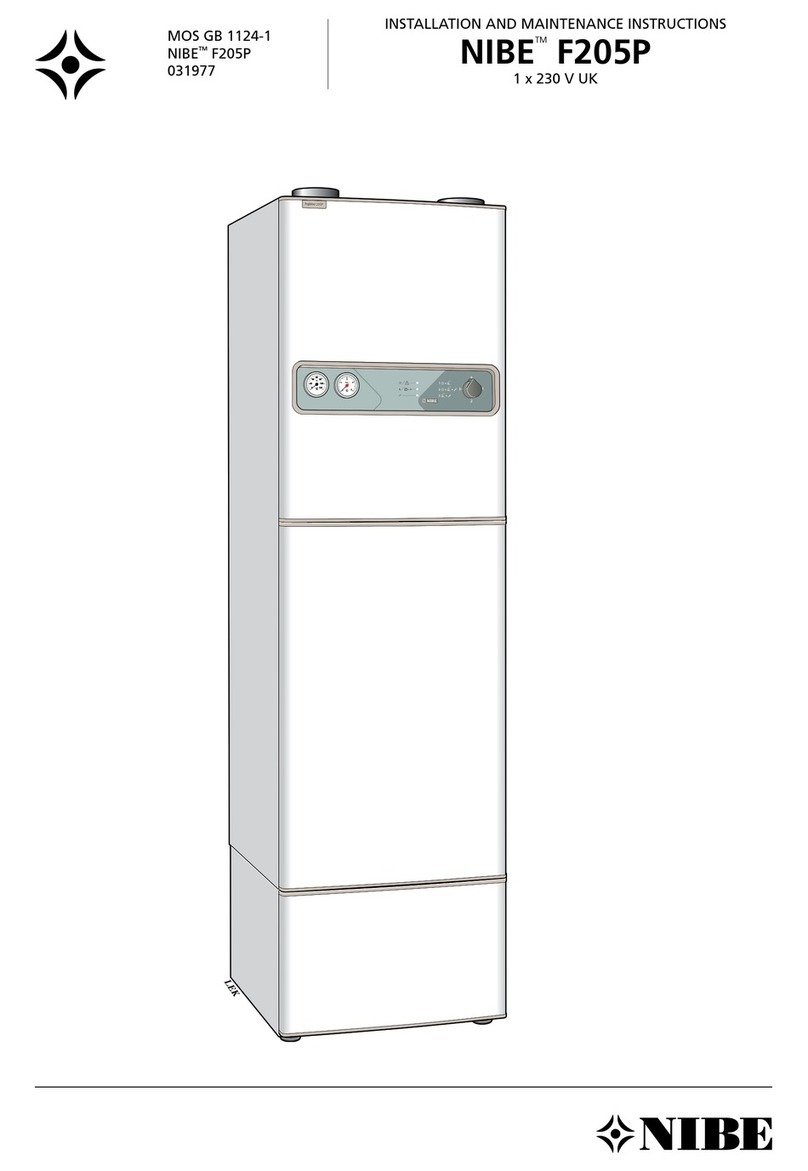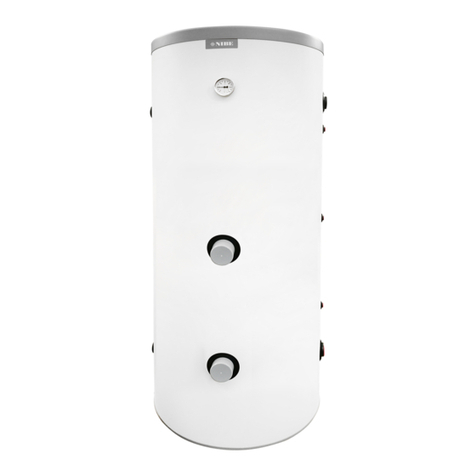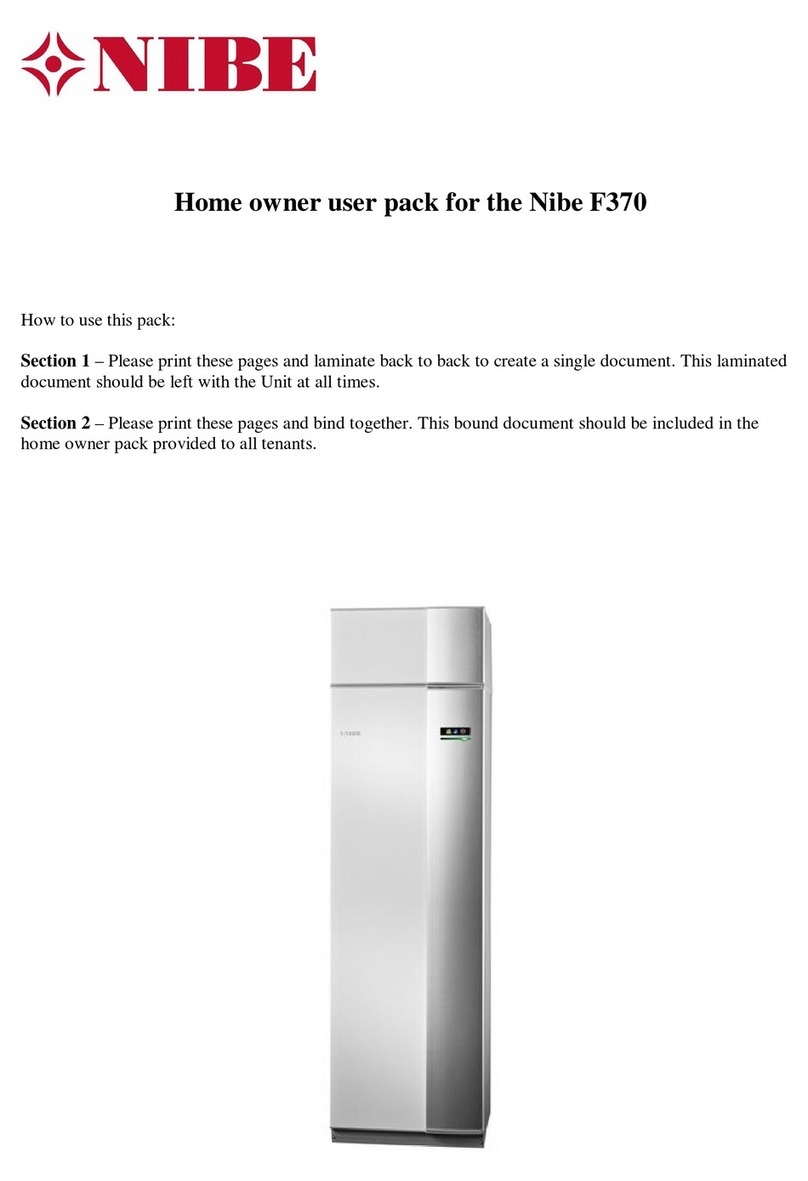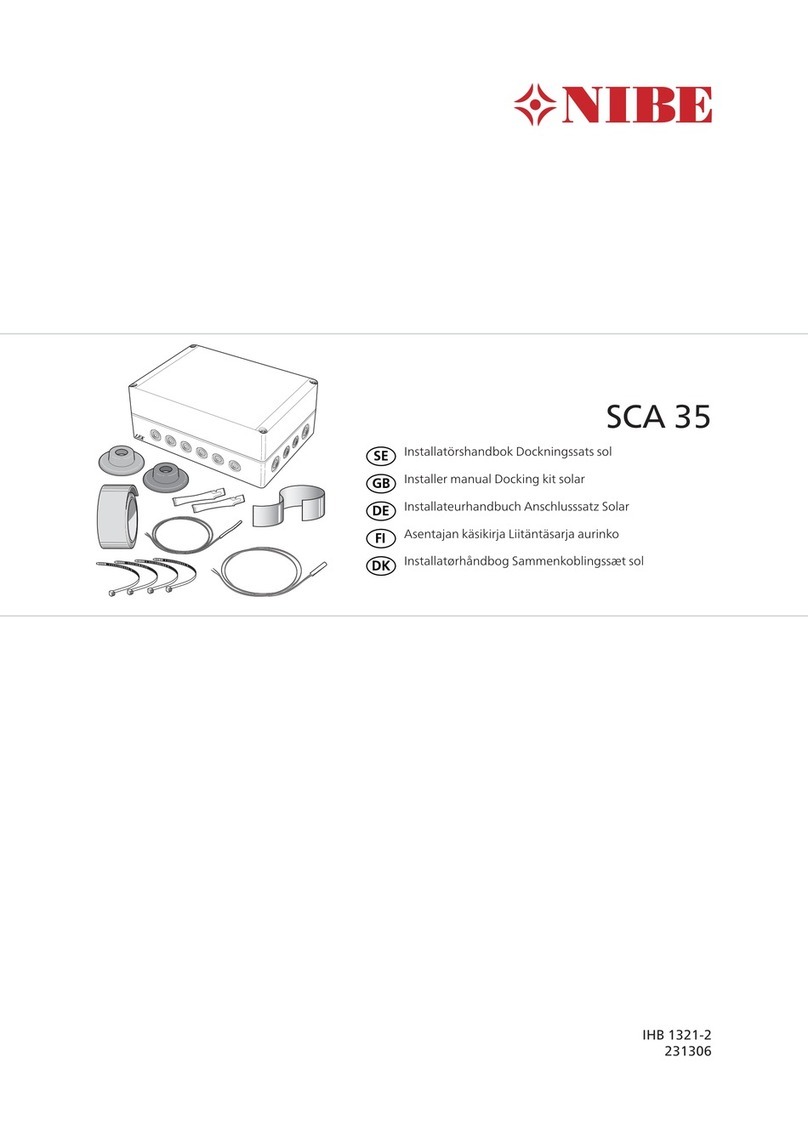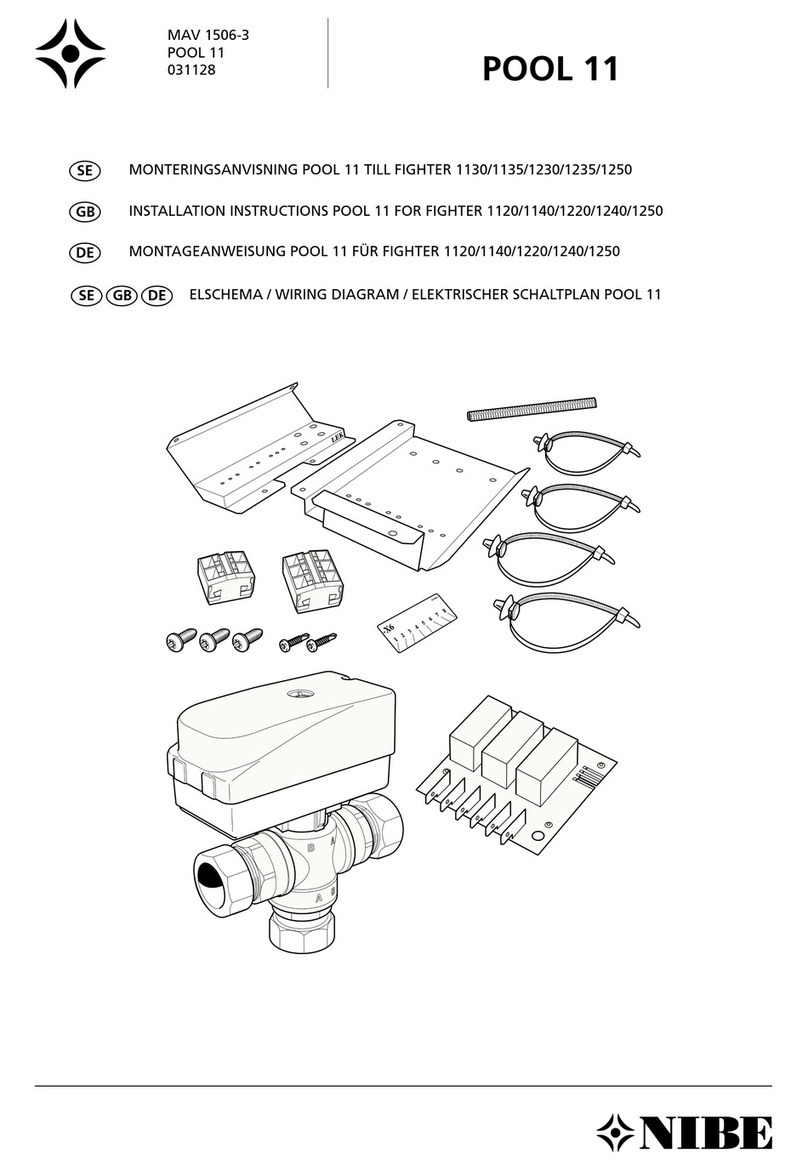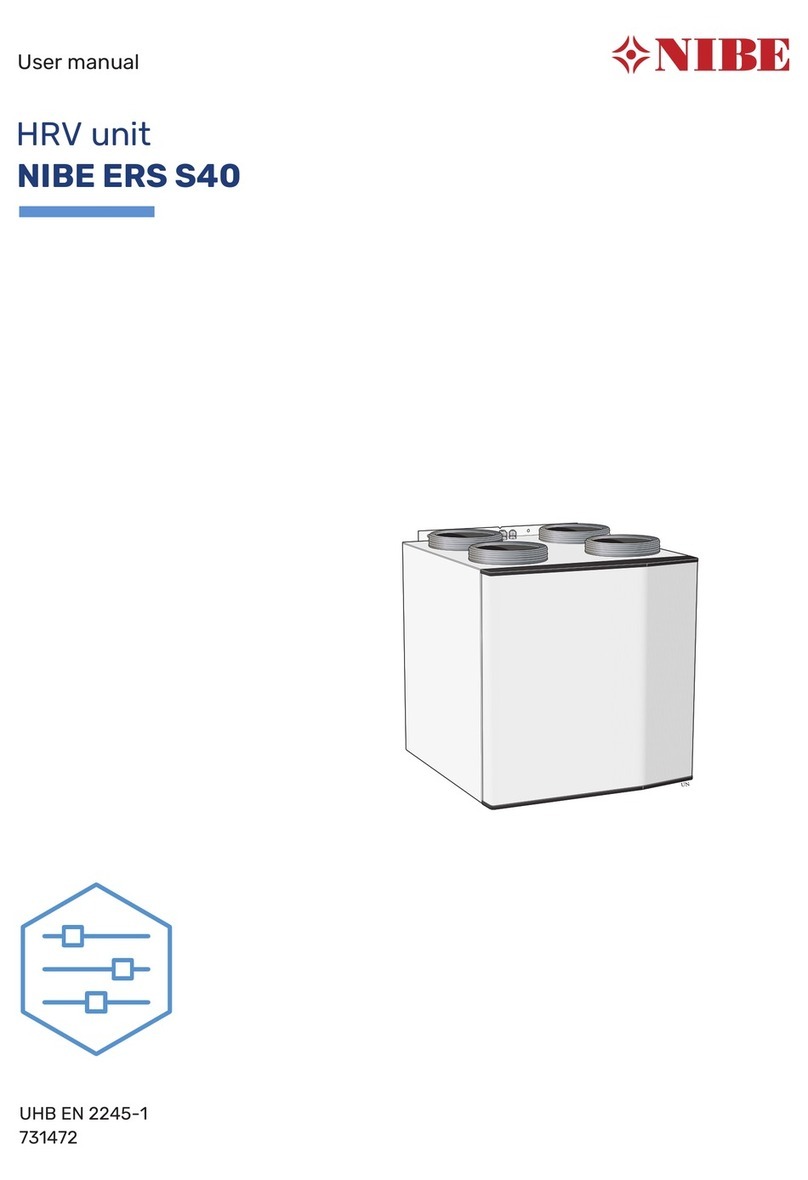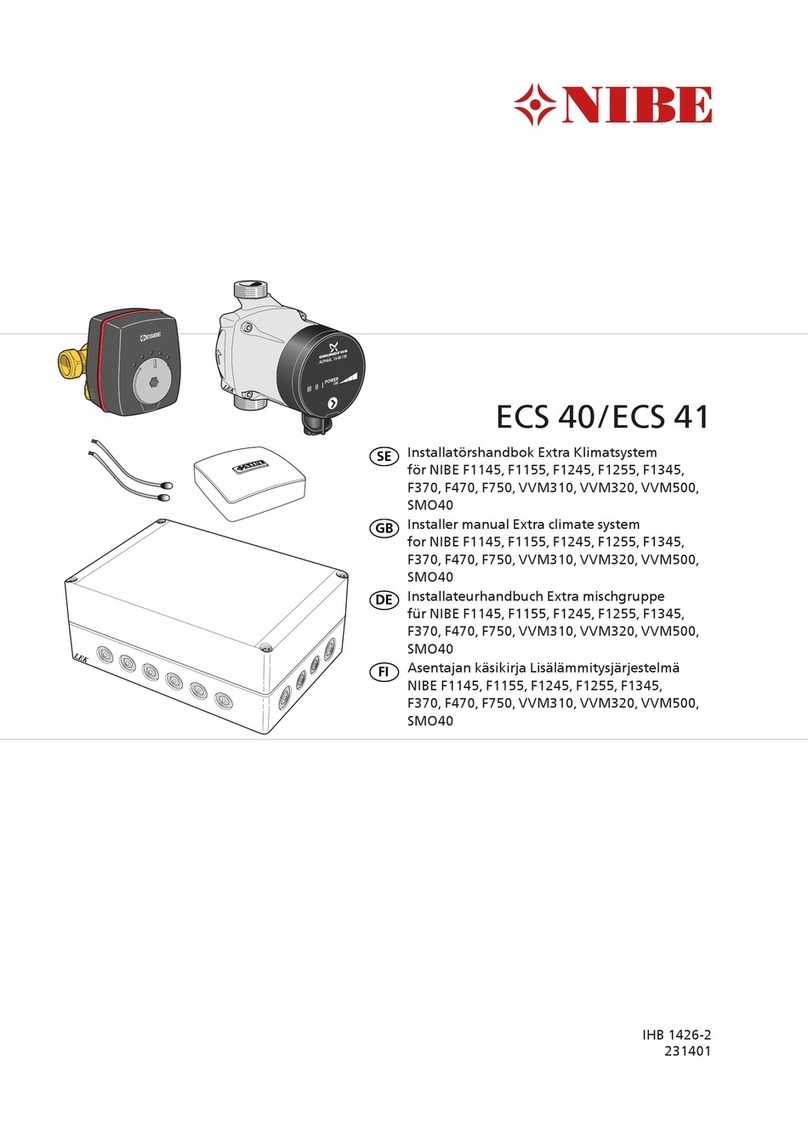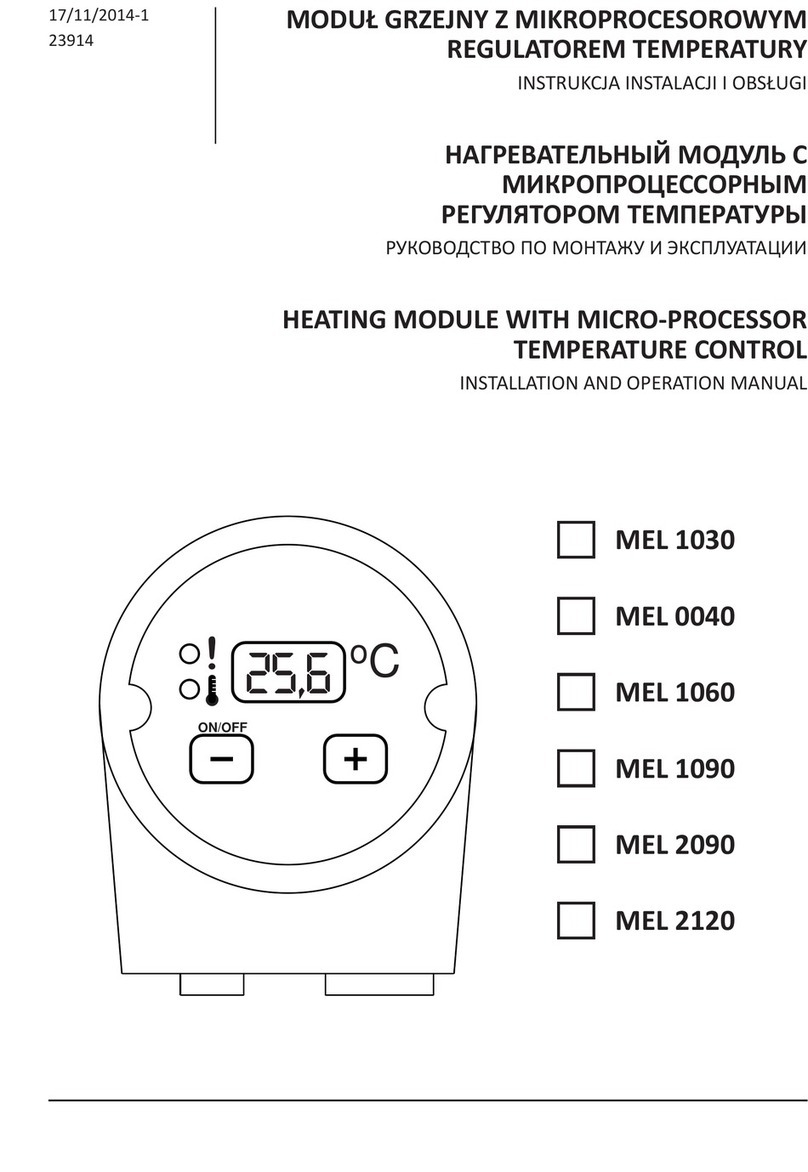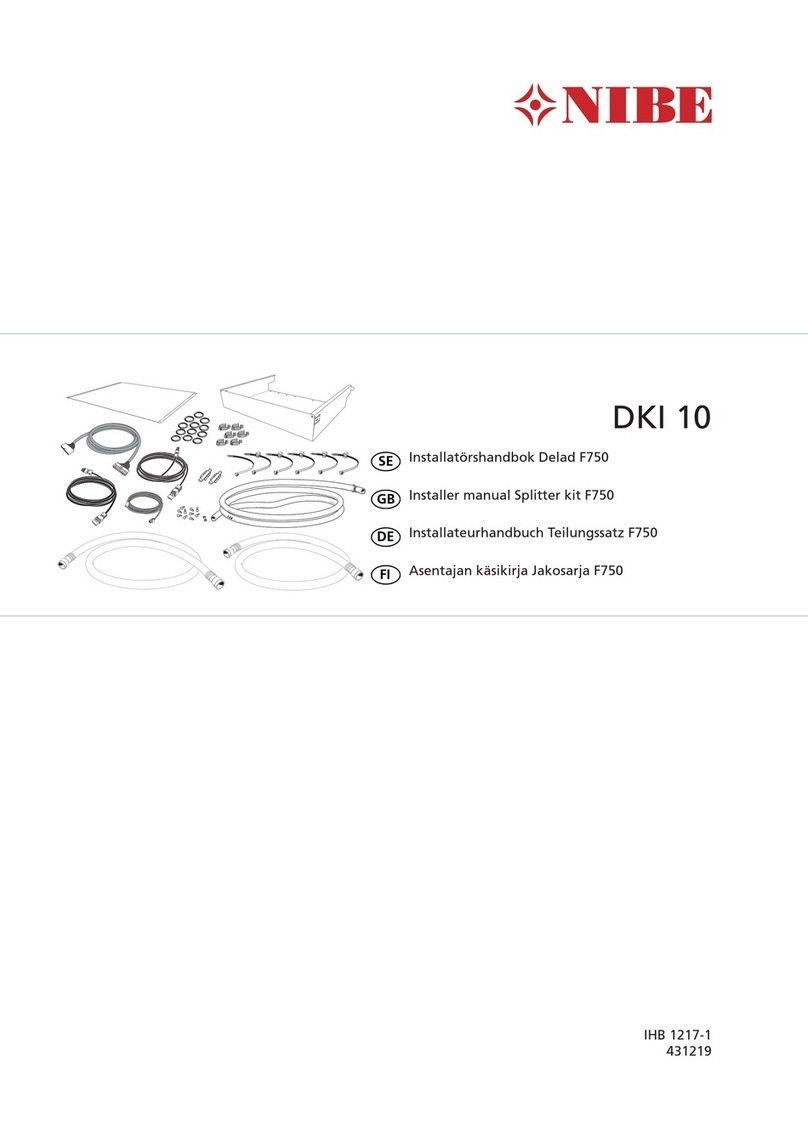
8Subject to Technical Modications of GV-HR110
Insulation of ducts in warm rooms
Supply air and extract air ducts:
Supply air and extract air ducts installed in heated rooms
of the residence do not need to be insulated unless
they are used for cooling, bypass or ground source
heat exchanger. In this case, the supply air duct is to be
insulated.
Fresh air and exhaust air ducts:
If the fresh air and exhaust air ducts are installed in a
heated space they must be insulated equivalent to at
least PE30 insulation.
When using ground source heat exchangers we
recommend 100 mm insulation on the fresh air duct.
Preheating of the fresh air
The supplied electric preheater is to be installed on
the fresh air duct and connected to the terminal block
H3. The AHU‘s built-in fresh air sensor (T3) is to be
disconnected from terminal L3, pos. 3 and 4, and
replaced with the supplied fresh air sensor. This fresh air
sensor is to be installed approx. 500 mm in front of the
electric preheater to avoid the impact of radiant heat.
It is important that the preheater is activated in menu 4.5
User menu and that the setpoint temperature is set in
menu 4.8 Service Menu. Recommended setpoint is -3 °C.
Reheating of the supply air
Since the counterflow heat exchanger cannot recycle
all heat from the exhaust air to the incoming air, the
supply air will be approx. 1-4 °C lower than the room
temperature of the residence during the winter season.
If you want to use the facility for heating, you can mount
a water-based or electric reheater that can heat the
incoming air to room temperature.
Water based reheater:
To protect the water based reheater from frost damages,
it must be equipped with a frost sensor and it must be
insulated. The frost sensor is mounted behind the plates
of the water-based reheater. The sensor that controls the
motor valve is mounted in the supply air duct approx. 500
mm behind the water-based reheater so that it will not
be affected by the radiant heat from the heating element.
The water connection to the water based reheater must
be performed by an authorised sanitary and heating
installer.
Electric reheater:
The control sensor for the electric reheater is mounted
in the supply air duct approx. 500 mm behind the electric
reheater so that it will not be affected by the radiant heat
from the heating element.
